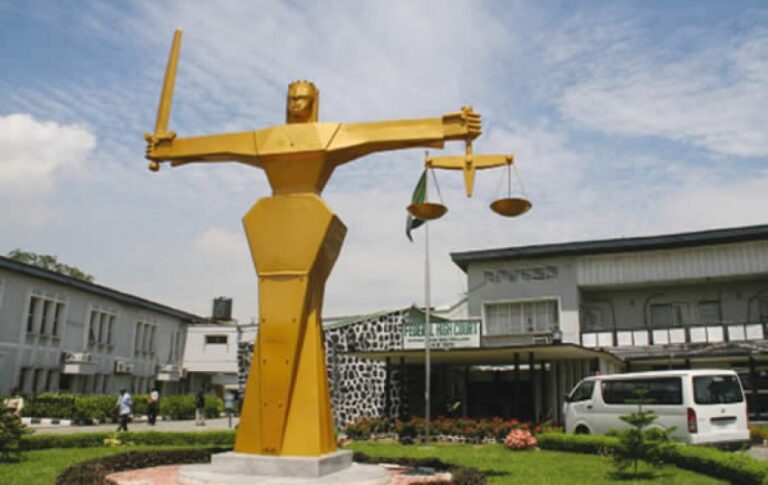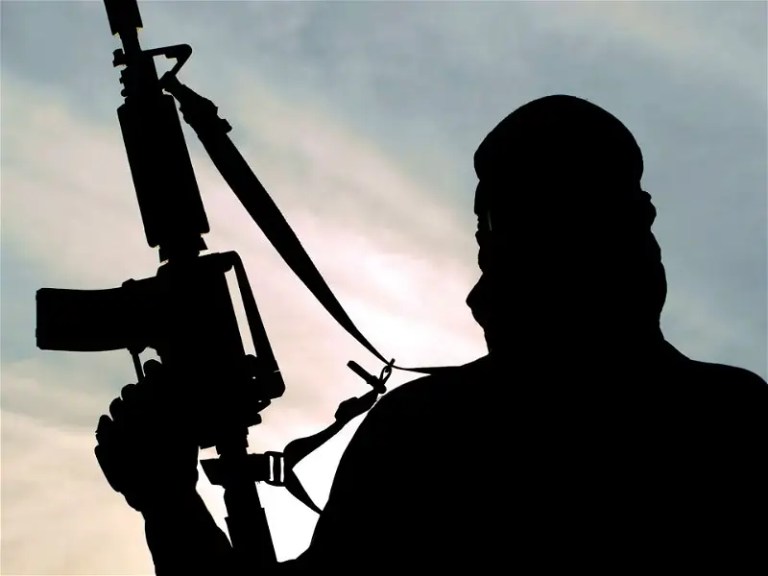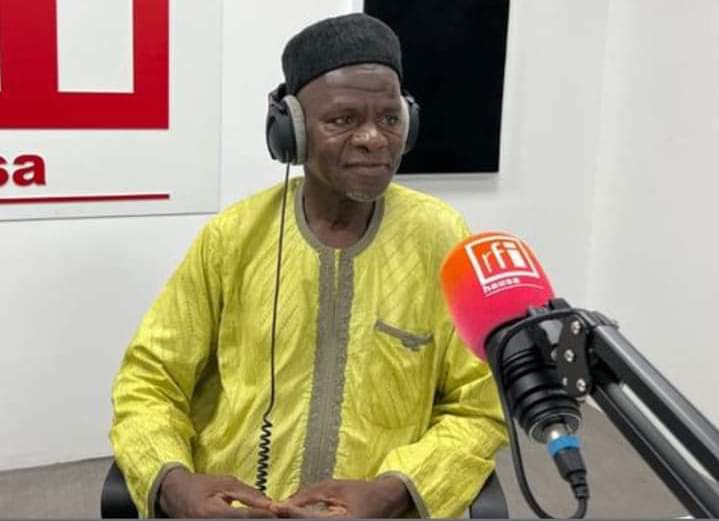Opinion
On death row: Killing in the name of the law, by Richard Akinnola

I know this is a controversial subject. However, l have not changed my long-held position against the death penalty.
Nothing can be more traumatic than keeping an appointment with death. As each day passess, you count your days; conjure the imagery of your neck in the loop or your body being swathed with ropes at the stakes. Even the most steel-hearted of criminals cringe at the sight of marksmen.
Or was it not Monday Osunbor, the notorious armed robber comrade of Lawrence Anini, who, when face-to-face with marksmen, succumbed to this truism when he blurted out: “E be like say I wan run mental.”
In the case of public execution during the military era, with Kirikiri prison as a case study, the firing range that had twelve stakes, was just about 50 meters from the gate of the prison.
The convicts, usually all handcuffed, were usually herded into the Black Maria that drove them to the execution ground, with the enthusiastic crowd in tow. In most cases, the convicts chanted moving religious choruses as they were driven to the stakes. They had to because they were on the last leg of their journey on earth.
While at the stakes, with all the religious rituals taking place, confession of sins with the priest or Imam, last interviews with the press, the convicts were spiritually no longer here. Their minds were focused on their next abode and the pains the hot lead would inflict on their bodies.
In 1985, during the execution of three drug couriers, Batholomew Owoh, Benard Ogedegbe and Lawal Ojulope, the scene was more pathetic. I was there to cover the execution. We stood directly behind the military marksmen.
Batholemew Owoh, then 26, and younger brother of Nollywood legend, Nkem Owoh, was the youngest of the trio, was almost dead out of fear by the time he was tied to the stakes. He shut his eyes, opened his palms, muttering some prayers for God to receive his soul. Ojulope was quavering as he prayed with the Muslim rosary, while Bernard Ogedegbe was pissed off with the seemingly long religious rites. He blurted out to no one in particular – “Look, let’s get on with this business mehn.”
The executioners, in full battle gears, emerged from a bush near the execution ground.
And when the execution commenced, there were two soldiers to one target. They were barely ten meters from their targets. The mental agony could well be imagined. As the commander of the executioners ordered. “Fire”, sporadic jerks of bodies of the three men responded to the spurts of tat-tat-tat-tat of the guns. All of them died after the first volley. But the drooped body of Owoh, who was at the middle, kept jerking each time the volley of bullets pierced his body, in response to the velocity of the bullets. But the commander of the executioners thought that Owoh was not dead. So, he ordered all the six soldiers to pump bullets into his body. One of the female reporters, Remi Onikepo covering the execution, fainted.
Tat-tat-tat-tat (pause). Again, the commander roared “fire” and the clatters of tat-tat-tat-tat rented the air. Though dead, the head and right hand of Owoh were still jerking. And the solders emptied their magazines on him, reloaded and fired on until the commander ordered a ceasefire. A doctor was asked to certify them dead. But this time, the whole stomach of Owoh had been ripped open, with the intestine scattered on the wooden floor.
But sometimes, even when doctors certify some executed men dead, there are exceptions to the rule such as happened in July 1994 where 38 robbers were publicly executed.
The executioners had performed their duties and left while the medical doctor had also certified them clinically dead.
But as local government workers were trying to prepare them for burial, one of shot robbers let out a faint cry, asking for water to drink.
Maintaining his innocence, the shot robber protested: “I’m thirsty…l need water…”
The journalists who covered the execution and the local government health workers were astounded. The pall-bearers, that is, the local government health workers begged the few policemen around to help complete the extermination of the robber. But the policemen demurred.
According to them, they were asked to come to the execution ground to maintain law and order and not to execute. The half-dead protesting robber was eventually packed into the van and taken away along with other dead robbers, likely buried alive.
In the case of death by hanging, the execution is carried out within the prison walls. As soon as the convict is called out by the prison warder from his condemned cell, his mates bid him bye, not sure whose turn would be next.
As soon as the convict gets into the adjourning room to the execution room, he is seized from behind by the warders, where the Sheriff reads out his crime and sentence. This is followed up with last rites by a priest, depending on the religious faith of convict.
Just before he is led into gallows, he is hooded. He is then made to stand in the middle of a circle drawn with chalk on the floor of the gallows. This marks the area of the two trap doors built into the gallow’s floor.
The noose is put around his neck by the executioner, who checks the ropes to make sure that it would not snap in the course of hanging. The executioner is usaully an expert because there are very few of them in the country. At a time in the late 90s, there was only one executioner, who took turns round the prison to do his job.
The executioner then suddenly releases the gear and the doors suddently open downwards and the convict plunges into the hollow beneath the gallows floor. The noose tightens aound his neck and throat, cutting off air and breaking his vertebral column at the neck. The convict is left hanging until the executioner is sure that he is dead and a doctor is called to certify him dead.
However, in some cases, death doesn’t come so early. The process has to be repeated before the convict dies. Ken Saro-Wiwa faced this painful ordeal. His process was repeated twice.
Relating how his client was executed in 1986 in South Carolina, United States, a lawyer said: “Although he was obviously very frightened, he was as cooperative as possible with the guards as he tried to pretend that all of the ritual preparation, the shaving of his head, the prolong rubbing in of electrical conducting gel, was all a normal sort of thing to happen. When the warden appeared in the cell door at 5 a.m. and read the death warrant, Terry’s left leg began to shake in involuntary movements. A few seconds later, the current hit and Terrry’s body snapped back and held frozen for the whole time that the current through his body.”
Whether a condemened convict goes through electric shock treatment, injection, hanging, firing squad, beheading or stoning, they all amount to “inhuman and degrading treatment,” contrary to most modern constitutions.
In Nigeria, where the only means of lawful killing are by hanging and firing squad(during military regimes), a condemned man, for the first time in the legal history of this country contested the constitionality of capital punishment.
The convict, Mr. Lateef Adeniji, was condemned to death by a Lagos High Court on February 28, 1986, for murder.
But in an amended notice of Appeal filed by the counsel, Mr. Olisa Agbakoba, the condemned man was contesting the constitutionality of Section 330 of the criminal code of Lagos which prescribed death penalty.
Mr. Agbakoba, was contending that death penalty was contrary to section 31(1)(a) of the 1979 constitution and so is null and void and of no effect.
Mr. Agbakoba was in a familiar terrain, having successfully fought the case of another condemned man, Peter Nemi at the Court of Appeal over the same section of the constitution.
Section 31(1) stated : “Every individual is entitled to respect for the dignity of his person and accordingly (a) no person shall be subjected to turture or to inhuman or degrading treatment.”
Agbakoba was basing his appeal on some decisions of some common law jurisdictions upholding the unconstitutionality of death sentence, particularly in South Africa whose constitutional court made a land mark decision on June 6, 1995, abolishing death penalty in the country.
In the case, two accused pesons, T. Makwanyane and M. Mchunu were convicted for murder and sentenced to death. The matter came to the constitutional court in view of the serious constitutional points raised by counsel to the convicts.
The contentious aspect of the law was section 277(1)(a) of the Criminal Procedure Act No. 51 of 1977 which prescribed death penalty for murder. This section, counsel to the accused contended, was inconsistent with the provisions of sections 9 and 11(2) of the South African 1993 constitution.
Section 9 states that “every person shall have the right to life,” while section 11(2) states that “no person should be subjected to cruel, inhuman and degrading treatment.” This section is similar to section 3(1) of our constitution”.
The constitutional court delved into various instances in modern jurisprudence – India, Canada, United States, Jamaica and made reference to the United Nations Committee on Human Rights where it held that death sentence is a cruel and degrading punishment.
In People V. Aderson, the California Supreme Court held that capital punishment is “impermissibly cruel” and that “it degrades and dehumanizes all who participate in its processes.”
Similarly, in the case of District Attorney for the Suffol District v.Watson 381 mass 648 (1980), the state of Massachussets prohibited capital punishment for being “unacceptable under contemporary standards of decency in its unique and inherent capacity to inflict. The mental agony is, simply and beyond question, a horror.”
But the South African Constitutional Court, having looked at the state of the law and the developments in other common law jurisdictions, held that death sentence “is the most extreme form of punishment to which a convicted criminal can be subjected.
“Its execution is final and irrevocable. It puts an end not only to the right to life itself, but to all other personal rights which are vested in the deceased under chapter three of the constitution.
“It leaves nothing except ther memory in others of what has been and the property that passes to the deceased’s heirs. In the ordinary meaning of the words, the death sentence is undoubtedly a cruel punishment. Once sentenced, the prisoner waits on death row in the company of other prisoners under the sentence of death, for the processes of their appeals and the procedures for clemency to be carried out.
“Throughout this period, those who remain on death row are uncertain of their fate, not knowing whether they will ultimately be reprieved or taken to the gallows. Death penalty is a cruel penalty and the legal processes which necessarily involve waiting in uncertainty for the sentence to be set aside or carried out, add to the cruelty. It is also an inhuman punishment for it…involves, by its very nature, a denial of the executed person’s humanity and it is degrading because it strips the convicted persons of all dignity and treats him or her as an object to be eliminated by the state.
“The question is not, however, whether the death sentence is a cruel, inhuman or degrading punishment within the meaning of section 11(2) or our constitution. The accused who rely on section 11(2) of the constitution, carry the initial onus of establishing this proposition.”
“The carrying out of the death sentence destroys life, which is protected without reservation under Section 9 of our constitution, it annihilates human dignity which is protected under Section 10, elements of arbitrariness are present in its enforcement and it is irredeemable.
“Taking these factors into account…. I am satisfied that in the context of our constitution, the death penalty is indeed a cruel, inhuman and degrading punishment,” the Constitutional Court held.
-

 National News1 day ago
National News1 day agoINEC’s exclusion of Julius Abure praised as victory for democratic accountability
-

 Politics1 day ago
Politics1 day ago2027: We’re ready to unseat APC – PDP
-

 Politics2 days ago
Politics2 days agoPDP Chairman, Damagun’s spokesperson resigns
-

 Politics2 days ago
Politics2 days agoObi slams Tinubu over St Lucia trip
-

 Opinion1 day ago
Opinion1 day agoOsun APC guber ticket: Aspirants emerge, battle lines drawn
-

 Crime and Law1 day ago
Crime and Law1 day agoBreaking: kidnapped Benue Links passengers regain freedom
-

 National News19 hours ago
National News19 hours agoPresidency fires back at Peter Obi, defends Tinubu’s trip to Saint Lucia
-

 Education18 hours ago
Education18 hours agoWe have no record of FUTA graduate — JAMB insists






















